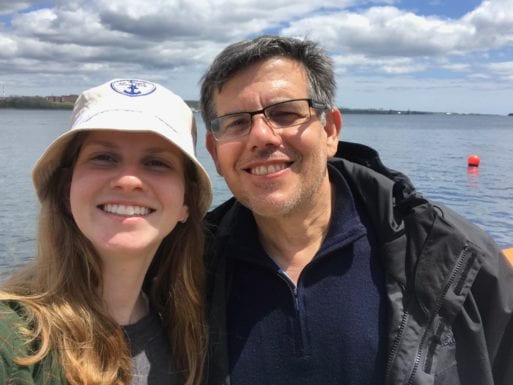
Dr. Paul Duberstein
Today SevenPonds speaks with Dr. Paul Duberstein, a public health psychologist, professor, and Chair of the Department of Health Behavior, Society, and Policy at Rutgers University. Dr. Duberstein’s earlier work centered on identifying risk factors for suicide and depression in older adults as well as intervention studies to improve outcomes among patients with advanced, life-limiting diseases and marginalized populations. Most recently, he has been studying the measurement of “aggressive care” at the end-of-life, and has published a research paper, “Physician and Patient Characteristics Associated With More Intensive End-of-Life Care.”
Editor’s note: This interview has been edited for length and readability.
Colleen Ferguson: Hi Dr. Duberstein, thank you for speaking with us. You started your career researching suicide and depression in older adults — how did that progress into end-of-life care?
Dr. Paul Duberstein: There is a long thread that connects my early work with suicide and depression to end-of-life care. It’s difficult to do research with mental health and aging without coming up against death and terminal illness.
While I was doing research on late-age suicide, we found that those who take their own lives often don’t have contact with mental health providers — and there are all kinds of reasons why that happens with older adults. But because of that, the locus of responsibility falls on Primary Care Providers (PCP) as opposed to mental health care providers. We did a study in upstate New York several years ago, and the number of people who had died by suicide and had seen a PCP in the month/week ahead was enough for us to say that PCPs have a significant role in suicide prevention.
And then we were challenged with the question, “What should doctors be doing to be more vigilant?”
And I thought to myself, “Well, I’m not a PCP, and I really don’t know what the nature of their day-to-day work is like.” So I did a one-year sabbatical in primary care in Rochester shadowing PCPs in a broad spectrum of clinics — both poor and affluent, and in seeing what PCPs work lives were like and what they were asked to do, and not asked to do. This is when I became very interested in the communication between doctor and patient.
And from this, I ended up going into cancer communications. One study I was involved in was a clinical trial funded by the National Cancer Institute to improve communication between oncologists and individuals with stage 4 cancer and their family and caregivers.
We followed the people enrolled in the trial all the way to their death. That allowed us to examine the nature of the healthcare provided in the last month of the patient’s life. This included whether or not they received chemotherapy, did they go to the emergency department (ED), when did they go into hospice, if they did at all?
Colleen: Now that we’re talking about the nature of healthcare provided at end-of-life, could you define aggressive care for our readers?
Dr. Duberstein: We recently submitted another article for publication where we ask the question: How does one define aggressive care? What indicators are researchers using? And we found over 100 indicators that people used, and we also found a good dozen words that people have used in place of the word “aggressive.”
While most people have indicated they prefer to die at home, the majority die in hospitals after receiving treatment that is voiced in terms like “potentially avoidable,” “burdensome,” “intensive,” “futile,” “wasteful,” and “aggressive.”
These words are obviously value-laden, so as academics we settled with a more value-neutral term that we use in this paper, called DIAL, which stands for “discretionary intervention at the end-of-life.”
So, there’s a lot packed in there — DIAL can cause more harm than good if underused or overused. For example, the underuse of hospice or palliative could be considered inappropriate or aggressive care.

Colleen: What about ventilation, resuscitation, or chemotherapy in the last 30 days of life?
Dr. Duberstein: Those are some top indicators, along with stays in the ICU. By far and away most people believe that no one should be in the ICU in their last week of life — if you’re going to the emergency department a week before your death, it’s highly unlikely that you’re having a “good” death. That could be considered a premier indicator of bad care. And included in that could be other indicators such as intubation, CPR, feeding tube, overuse and underuse of certain medications, dialysis, and tracheotomy.
Colleen: And your research, “Physician and Patient Characteristics Associated With More Intensive End-of-Life Care” examined what would increase the likelihood of the use of these indicators? These discretionary interventions at the end-of-life?
Dr. Duberstein: We looked at whether a particular physician attribute — what we call comfort with medical paternalism — was independently associated with DIAL or indicators of care that is incompatible with a “good” death.
For this study, we asked physicians a single question — “Overall, how comfortable would you feel if a patient requested that you make a decision using all that is known about the treatments?”
Responses ranged from low scores of “I’m not at all comfortable” to high scores of “I am very comfortable.” Higher scores indicated greater comfort with what we call paternalistic decision-making.
In short, if the patient tells you to make all decisions — how comfortable are you with that? If it’s high, then there’s very little hesitation by those doctors to use discretionary intervention like committing patients to ED or using chemotherapy in the last 30 days of life.
This concludes Part One of our interview with Dr. Paul Duberstein. Please join us next week for part two when we discuss the significance of a physician’s psychological attributes and its implications for end-of-life care.

 What Are Indicators of “Aggressive Care” at the End-of-Life?
What Are Indicators of “Aggressive Care” at the End-of-Life?


 Funeral Home Owner Chris Johnson Spending Halloween in Jail
Funeral Home Owner Chris Johnson Spending Halloween in Jail
 Our Monthly Tip: Toast a Loved One with a Personalized Glass
Our Monthly Tip: Toast a Loved One with a Personalized Glass
 My Cousin’s Death Taught Me the Meaning of Life
My Cousin’s Death Taught Me the Meaning of Life














